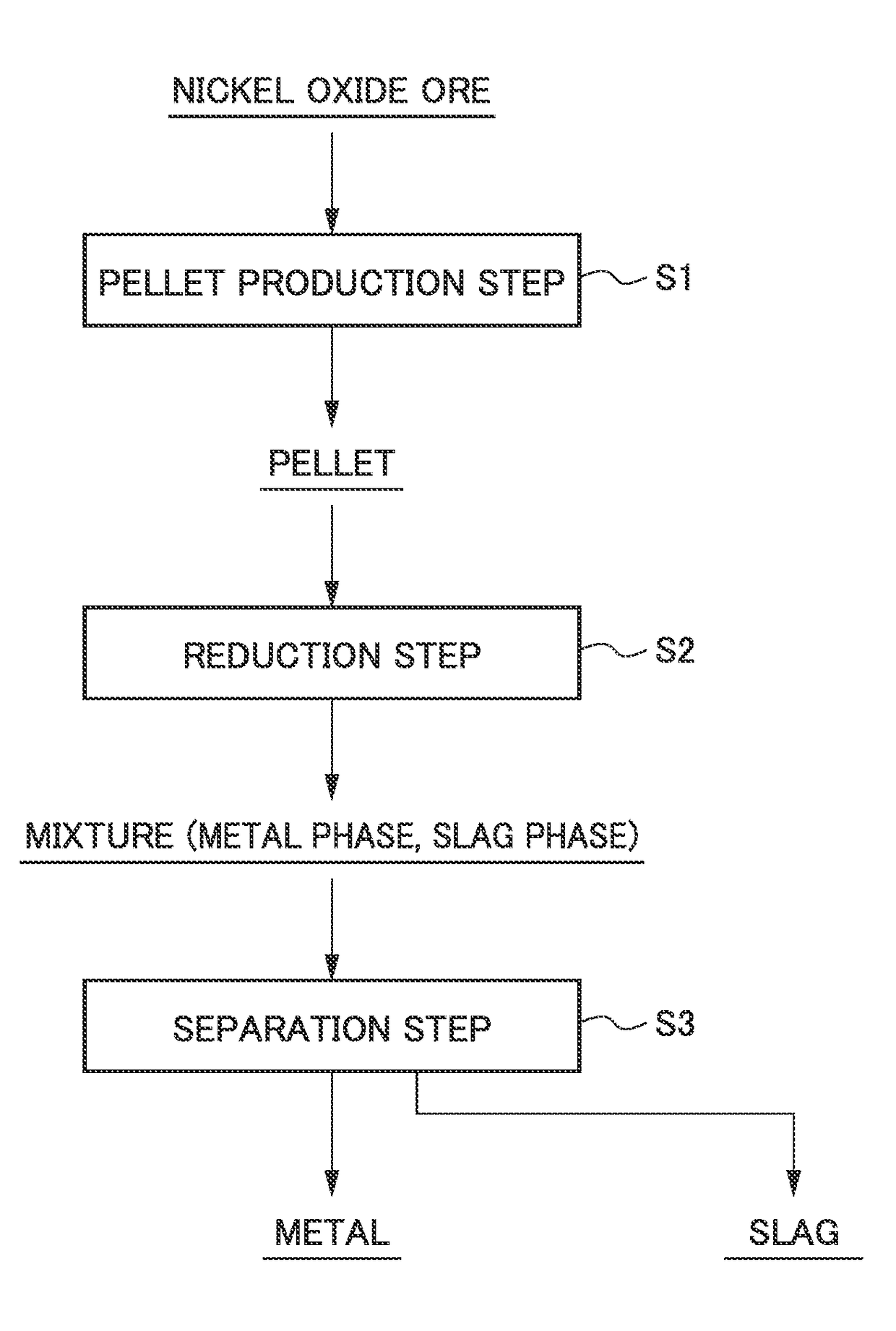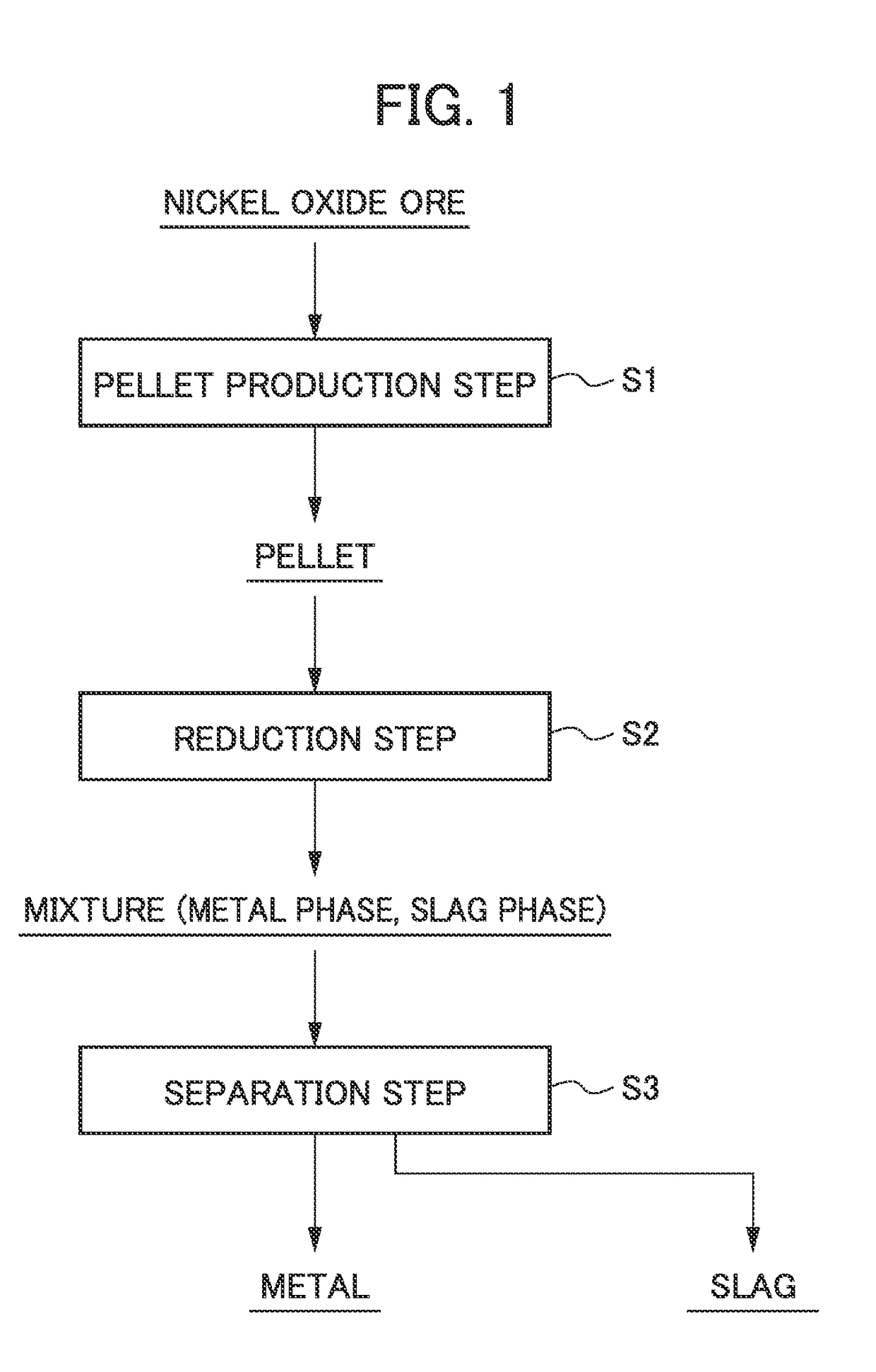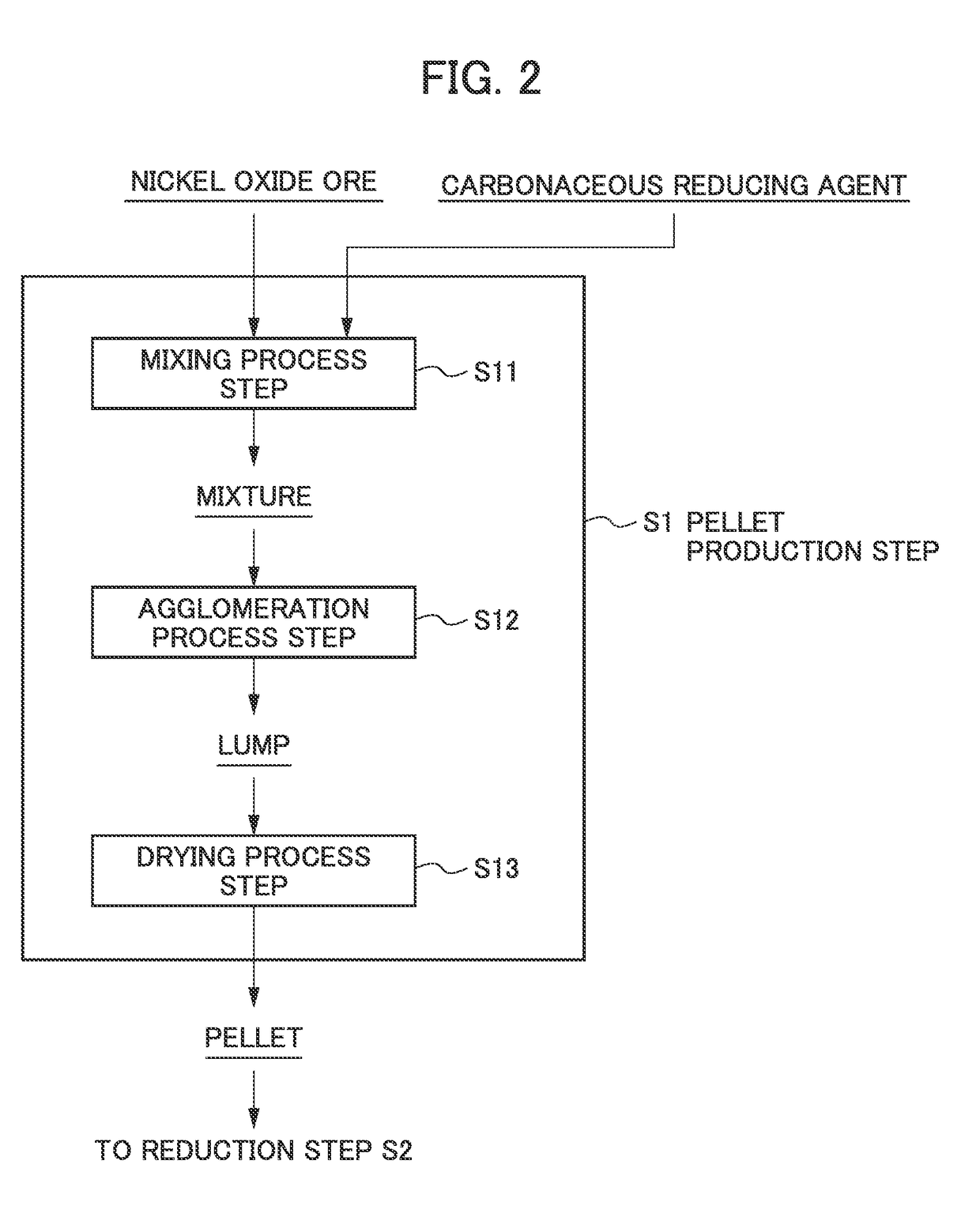Method for smelting saprolite ore
- Summary
- Abstract
- Description
- Claims
- Application Information
AI Technical Summary
Benefits of technology
Problems solved by technology
Method used
Image
Examples
Example
Example 1
[0068]Saprolite ore serving as raw material ore having a composition shown in Table 2 was mixed with a carbonaceous reducing agent to obtain a mixture. The mixed amount of the carbonaceous reducing agent included in the mixture was such that the amount of carbon was 6% relative to the total value of a chemical equivalent required for reducing nickel oxide contained in the resulting pellet into nickel metal and a chemical equivalent required for reducing iron oxide contained in said pellet into iron metal (the total value of the chemical equivalents) being 100%.
[0069]Next, an appropriate amount of water was added to the resulting mixture of the raw material powders, and kneading was performed by hand to form a spherical lump. Then, drying treatment was performed in which hot air at 300° C. to 400° C. was blown against the lump until the solid content of the resulting lump became about 70 wt %, and the water content became about 30 wt % to produce a spherical pellet (size (di...
Example
Example 2
[0073]Raw materials were mixed in a similar way as in Example 1 to obtain a mixture, and then pellets were manufactured. At this time, the mixed amount of the carbonaceous reducing agent as a raw material was such that the amount of carbon was 20% relative to the aforementioned total value of the chemical equivalents being 100%.
[0074]Next, the furnace floor of a smelting furnace was covered with a coal powder (carbon content: 85 wt %, particle size: 0.4 mm) which served as a carbonaceous reducing agent, and 100 produced pellets were then charged so as to be loaded onto the furnace floor carbonaceous reducing agent arranged to cover the furnace floor thereof. The pellets were charged into the smelting furnace at a temperature condition of 600° C. or less.
[0075]Then, reduction heat treatment was performed in the smelting furnace at a reduction temperature of 1400° C. The pellets were taken out from the furnace 5 minutes after the start of the reduction heat treatment, and ass...
Example
Example 3
[0077]Saprolite ore with a composition shown in Table 2 as raw material ore, limestone as a flux, and a binder as well as a carbonaceous reducing agent were mixed to obtain a mixture. The raw materials were mixed to obtain a mixture, and then dry pellets were manufactured. In Example 3, the mixed amount of the limestone as a flux was 8% in terms of the weight of the limestone relative to the mixed weight of the saprolite ore at this time. Further, the mixed amount of the binder was 1% relative to the mixed weight of the saprolite ore. Moreover, the mixed amount of the carbonaceous reducing agent was 6% in terms of the carbon content relative to the aforementioned total value of the chemical equivalents being 100%.
[0078]Next, the furnace floor of a smelting furnace was covered with a coal power (carbon content: 85 wt %, particle size: 0.4 mm) which served as a carbonaceous reducing agent, and 100 produced pellets were then charged so as to be loaded onto the carbonaceous red...
PUM
| Property | Measurement | Unit |
|---|---|---|
| Temperature | aaaaa | aaaaa |
| Temperature | aaaaa | aaaaa |
| Temperature | aaaaa | aaaaa |
Abstract
Description
Claims
Application Information
 Login to View More
Login to View More - R&D
- Intellectual Property
- Life Sciences
- Materials
- Tech Scout
- Unparalleled Data Quality
- Higher Quality Content
- 60% Fewer Hallucinations
Browse by: Latest US Patents, China's latest patents, Technical Efficacy Thesaurus, Application Domain, Technology Topic, Popular Technical Reports.
© 2025 PatSnap. All rights reserved.Legal|Privacy policy|Modern Slavery Act Transparency Statement|Sitemap|About US| Contact US: help@patsnap.com



